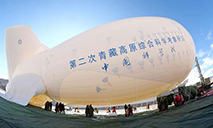Chinese witnesses flourishing new types of consumption online and offline in recent years

A woman shops at the Global Premium Duty Free Plaza, Haikou, capital city of south China’s Hainan Province. (Photo/Su Bikun)
New types of consumption have been thriving in China in recent years, thanks to the in-depth application of the Internet, cloud computing, artificial intelligence and other new technologies, as well as the continued process of consumption upgrading.
New types of consumption mainly include online retail business forms such as online shopping, new models of online services, contactless consumption, platform-based consumption and shared consumption, according to Wang Yun, deputy director of the international economics research institute of the Chinese Academy of Macroeconomic Research, a think tank under the National Development and Reform Commission.
Wang added that new types of consumption constantly evolve according to technological progress and changes in economic and social development.
China’s online sales performed well in the first quarter of this year, with the sales volume rising 6.6 percent year-on-year to reach about 3.01 trillion yuan ($443.2 billion), data from the National Bureau of Statistics showed.
Experts said that new types of consumption have opened up a new space for consumption growth and have become a new driver sustaining economic growth.
During the COVID-19 pandemic period, contactless business models, including smart supermarkets, shops, restaurants and business districts, have grown rapidly, while online services such as online entertainment, fitness and tourism have become new engines for consumption recovery.
For example, as of December 2021, the number of online medical users reached 298 million, up 38.7 percent year-on-year, according to a report released by the China Internet Network Information Center.
The integrated development of online and offline consumption has become one of the typical features of new types of consumption. Due to the negative effects of the pandemic, market entities have sought opportunities through digital transformation.
Some restaurants located in food streets across the country, including the well-known Hubu Lane in Wuhan, capital city of central China’s Hubei Province, have seen a surge in online orders.
Foreign trade companies at the Yiwu International Trade Mart, the world’s largest small commodity trading hub in east China’s Zhejiang Province, have sold their products to overseas customers through live-streaming sessions.
Besides, Chinese e-commerce platforms have meanwhile expanded their offline businesses. While launching a new department store channel recently, Chinese e-commerce giant JD.com said it would open brick-and-mortar stores across the country.
China will promote new types of consumption, accelerate the integration of online and offline consumption, expand and upgrade information consumption, and foster new consumption models such as smart products, retail and tourism, according to guidelines on further tapping the country’s consumption potential as recently unveiled by the State Council.
Many Chinese localities have taken measures to constantly tap into the potential offered by new types of consumption. For instance, Haikou, capital city of south China’s Hainan Province, began to issue coupons to its residents and tourists on May 3 to boost the city’s consumption. The first batch of consumption coupons included 13,000 such vouchers that were handed out for offshore duty-free shopping.
Photos
Related Stories
- Domestic brands attract young consumers
- Consumption plays larger role to bolster economy
- China to further tap consumption potential
- China to promote steady growth in consumption and foreign trade, and stabilize economic fundamentals
- China to bolster consumption of green, smart home appliances
- China pledges more efforts to stimulate consumption
- China’s gigantic consumer market to steam ahead at a quickened pace in 2022
- China's nighttime consumption soars in Spring Festival holiday
- China’s Gen Z stimulates new consumption trends during Spring Festival
- Spring Festival consumption witnesses strong growth online, with ice and snow tourism boosted by the Winter Olympics
Copyright © 2022 People's Daily Online. All Rights Reserved.










